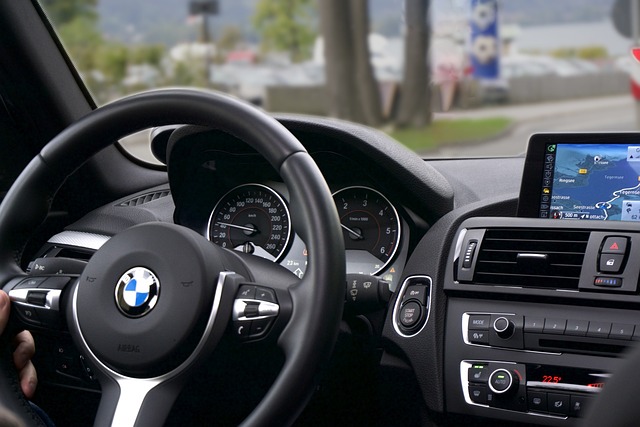Learn how to register your car in California with our comprehensive guide. This step-by-step process ensures you meet all state requirements, from understanding essential documentation to completing a crucial DMV VIN verification. We’ll walk you through gathering needed documents and filling out the registration application accurately. By following these clear instructions, including key aspects like dmv vin verification, you’ll be on your way to legally registering your vehicle in no time.
- Understand the Requirements for Car Registration in California
- Gather Necessary Documents for Vehicle Registration
- Perform DMV VIN Verification: Steps and Importance
- Complete the California Vehicle Registration Application
- Submit Your Application and Pay the Registration Fees
Understand the Requirements for Car Registration in California

Before registering your car in California, it’s important to understand the requirements set by the Department of Motor Vehicles (DMV). One crucial step is ensuring that your vehicle meets all safety and emission standards. This includes a valid and accurate Vehicle Identification Number (VIN) verification, which can typically be conducted through a mobile VIN inspection or at a designated DMV location. The DMV will also require essential documents like proof of ownership, current insurance, and a completed application form.
Additionally, you’ll need to pay the necessary registration fees and pass an emission test if your car is within a certain age range. A mobile VIN verification can help streamline this process by providing instant results and ensuring that all the information on file with the DMV matches your vehicle’s specifications. This not only saves time but also reduces potential errors during the registration process.
Gather Necessary Documents for Vehicle Registration

Before heading to the California Department of Motor Vehicles (DMV), ensure you have all the required documents for a smooth registration process. The key document is the Vehicle Identification Number (VIN) verification, which can be done through a mobile vin inspection or by visiting a DMV office. This step is crucial as it confirms the vehicle’s history and ensures it meets safety standards.
Along with the VIN verification, gather essential papers such as proof of ownership, which could be a title or a bill of sale, a valid driver’s license, and current auto insurance. If you’ve recently purchased the car, you might also need a purchase agreement or a copy of the odometer reading from the previous owner. These documents streamline the registration, making it easier for the DMV to process your application.
Perform DMV VIN Verification: Steps and Importance

Performing a DMV VIN verification is a crucial step in registering your car in California. This process ensures that the vehicle’s identification number (VIN) is accurate and matches the details on record with the Department of Motor Vehicles (DMV). It’s essential to have this verification done before submitting your registration application, as it helps to prevent fraud and ensures the safety and legality of your vehicle.
To conduct a DMV VIN verification, you can visit one of California’s many DMV offices or opt for a convenient mobile vin inspection service. The latter involves a certified professional coming to your location to perform a thorough vin inspection using specialized tools. This alternative is ideal if you have a busy schedule, are unable to travel to a DMV office, or simply prefer the added convenience and flexibility.
Complete the California Vehicle Registration Application

To begin the registration process for your vehicle in California, you’ll need to complete the California Vehicle Registration Application. This form requires detailed information about your car, including its make, model, year, and unique Vehicle Identification Number (VIN). Accurate VIN verification is a crucial step, ensuring that the details match those on record with the Department of Motor Vehicles (DMV). You can facilitate this process with a mobile vin inspection or use a trusted vin verifier to confirm the VIN’s validity before submitting your application.
Once you’ve accurately filled out the form, including the verified VIN, it’s ready to be submitted along with the required fees and documents to the DMV. This ensures that your vehicle becomes legally registered in California, allowing you to enjoy seamless driving experiences within the state’s regulations.
Submit Your Application and Pay the Registration Fees

After completing your vehicle’s inspection and gathering all necessary documents, it’s time to submit your application for registration. You can do this through the California Department of Motor Vehicles (DMV) online or in-person at a local DMV field office. If you opt for an in-person visit, be prepared with your completed form, valid identification, proof of insurance, and the required fees.
The registration process involves a series of steps, including the crucial dmv vin verification. This step ensures that the vehicle’s unique identifier, the Vehicle Identification Number (VIN), is accurate and matches the data in their records. The VIN inspection can be conducted at a DMV field office or, for added convenience, you may choose a mobile vin inspector—a service provided by some third-party companies—to perform a mobile vin verification right at your location. Once your application is approved and all fees are paid, you’ll receive your registration documents, allowing you to legally operate your vehicle on California roads.
Registering a car in California is a straightforward process once you understand the requirements and have all the necessary documents. Completing the DMV VIN verification is a crucial step, ensuring your vehicle’s identity and history are accurately confirmed. By following the outlined steps, from gathering paperwork to submitting applications and paying fees, you’ll be well on your way to legally registering your vehicle in no time.
